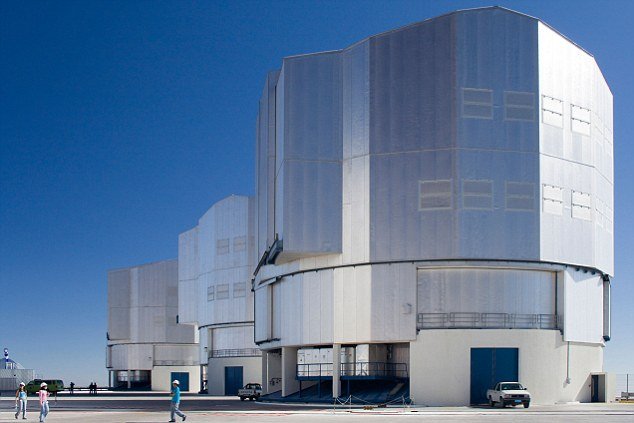Rocky planet with liquid water and temperature similar to Earth discovered by ESO
Astronomers from European Southern Observatory (ESO) have found a planet which is one of the best candidates for life ever found by telescopes on Earth.
The newly discovered planet is rocky, like Earth, and orbits its sun within the “habitable zone”, where temperatures are just right for liquid water to exist on the planet’s surface.
The temperature on the surface could be close to Earth’s.
“This planet is the new best candidate to support liquid water and, perhaps, life as we know it,” study leader Guillem Anglada-Escudé said.
The planet was detected using data from the European Southern Observatory’s telescopes, which was analyzed to look for “wobbles” in a star’s motion caused the gravitational “tug” of planets orbiting it.
The new planet has a mass around 4.5 times the Earth, and orbits a star called GJ 667C, 22 light years from Earth – just next door, in galactic terms.

Astronomers from European Southern Observatory in La Silla Paranal, Chile, South America, have found a planet which is one of the best candidates for life ever found by telescopes on Earth
The new planet absorbs around the same amount of light as our planet.
“This was expected to be a rather unlikely star to host planets. Yet there they are, around a very nearby, metal-poor example of the most common type of star in our galaxy” said Steven Vogt, a professor of astronomy and astrophysics at UCSC.
“The planet is around one star in a triple-star system. The other stars are pretty far away, but they would look pretty nice in the sky.
“The detection of this planet, this nearby and this soon, implies that our galaxy must be teeming with billions of potentially habitable rocky planets.”
“With the advent of a new generation of instruments, researchers will be able to survey many M dwarf stars for similar planets and eventually look for signatures of life in one of these worlds,” said Guillem Anglada-Escudé.
The host star is a member of a system with three stars – the other two are orange dwarf planets.
The star has a different chemical makeup than our Sun, with a much lower abundance of elements heavier than helium, such as iron, carbon, and silicon. This discovery indicates that potentially habitable planets can occur in a greater variety of environments than previously believed.
GJ 667C had previously been observed to have a large planet orbiting close to its star, although this finding was never published.
This planet orbits so close to the star that it would be too hot for liquid water. The new study started with the aim of obtaining the orbital parameters of this super-Earth.
But in addition to this first candidate, the research team found the clear signal of the new planet GJ 667C.
The team found that the system might also contain a gas-giant planet and an additional super-Earth.
However, further observations are needed to confirm these two possibilities.
